|
| Me standing next to our Black Knight rocket |
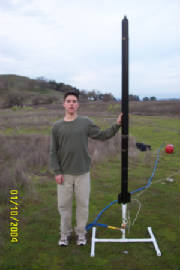
|
| Click on picture to enlarge |
Coney
Rocket Stability A Detailed Analysis
Backglider videos
Movies/galleries
In this picture you can see the rocket on its' decent. This rocket is my first backslider.
| Black Knight, backgliding to earth |

|
| Click on picture to enlarge |
This is a picture of my dad and I standing next to our water rocket, with an Este's space shuttle sitting on the top of the
rocket. The space shuttle caused the rocket to be unstable. As a result the rocket went about 50 feet, and then tumbled back
to earth. Although it wasn't a complete success it still looked cool.
| Black Knight with Shuttle |
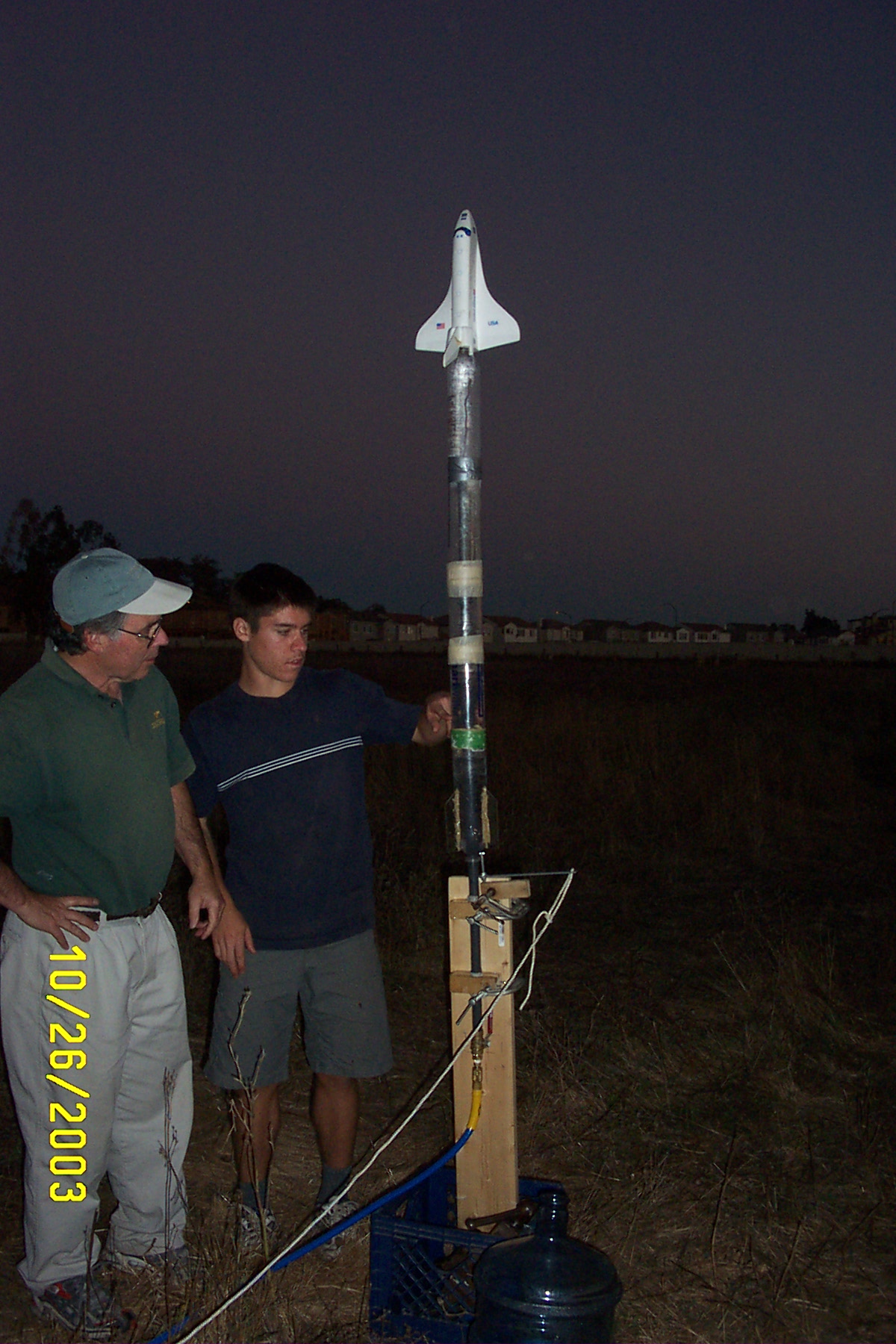
|
| Click on picture to enlarge |
This is what happens to a water rocket that does not backslide. As you can see in the photo below the nose pretty much got
destroyed.
| Crunched nose-cone |
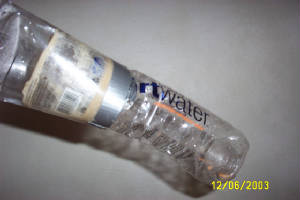
|
| Click on picture to enlarge |
Here is a picture of my first backslider. It is made from four one liter smart one water bottles. We taped a crushable nose
cone to the rocket, which was another smart one bottle. We added a crushable nose-cone so all our hard work wouldn't get destroyed.
| Me holding Black Knight |
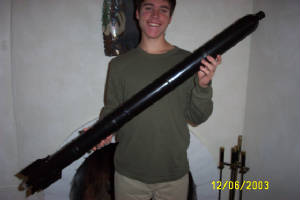
|
| Click on picture to enlarge |
Last weekend we launch off our black knight water rocket. The first time we launched it it kind of backslid. When it hit the
nose-cone was damage. We put the rocket on the launcher and popped the nose-cone out. When we launched the rocket again we
added weight to the fins. This moved the center of gravity back below the cent of pressure. When we launched the rocket again
it backslid.
Today we pressure tested our water rocket. We pumped it up to about 100 P.S.I. It held for about 20 seconds, and then the
top half of the rocket flew off while the bottom half stayed on the launcher. The bottle between the part of the rocket that
launched off and the part that stayed on the launch pad got torn apart. We are not sure why that particular bottle failed
instead of another bottle, but we are going to need to build a new rocket. This time I think we will make it out of two sections
of plastic mailing tube, and use the tops of a 1 liter 7-up bottle as the nozzle and nose-cone of the rocket.
| Blown up on Lauch Pad |
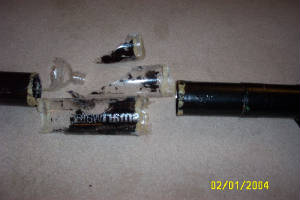
|
| Click on picture to enlarge |
Last weekend we launched our latest Black Night water rocket with a reduced nozzle. We experimented using less water and discovered
that for bigger rockets with small nozzles using less water makes the rocket go higher. We used about 1 liter of water and
got about 500 feet. Maybe higher! On our last launch our rocket went so high that we lost it on a house. The rocket was in
the air for about 25 seconds. That's a long time, espcialy for a rocket using a backslider recovery system! We got some cool
video of the launch, below the rocket. Check it out by clicking on the link below.
|

